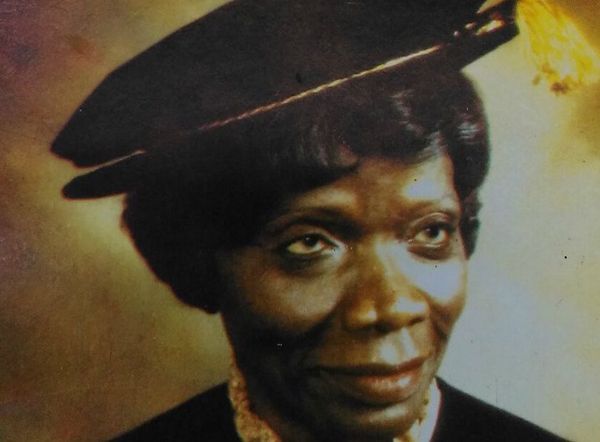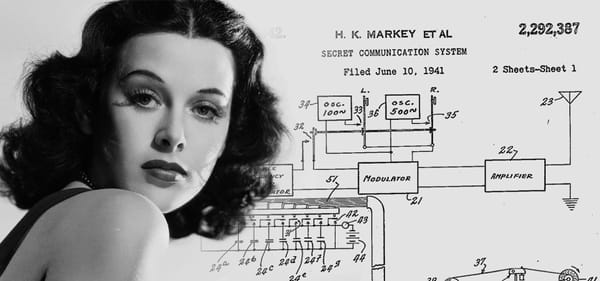Russian Night Witches - Hitler's Nightmare
Facing bullets, frostbite, scepticism and sexism. These daring Russian pilots were the horrors that besieged Nazi nights. The women of the 588th Night Bomber regiment, led by Marina Raskova, were feared by the Nazi's and led the way for women in warfare.

It is well known that women were not idle during World War II. They worked in the factories, filling the roles left by men who had gone to fight. They encouraged their husbands and sons to join the war effort, and they endured harsh rationing, to ensure enough food for all. But for some women, that was not enough. They wanted to give everything they had to the war effort and that included their lives.
The 588th Night Bomber Regiment was a Russian, all-female, bombing squad that tormented the Nazi military forces from 1941 until the end of the war. Over the course of World War II, they dropped 3,000 tons of bombs and 26,000 tons of incendiaries onto Nazi targets. They were considered such a problem by Nazi officers, that any German pilot who shot down a 'Night Witch' was immediately awarded the prestigious Iron Cross Medal. The women who haunted the skies of Germany, were the first women to be allowed to engage directly in military combat, and thus led the way for countless other women who have risked their lives to defend their countries.

On 22 June 1941, Nazi Germany invaded the Soviet Union. At this time, women were barred from combat, however, Major Marina Raskova used her position and status to petition Josef Stalin into creating a female combat unit. The Soviet military was not keen on the idea however, the Nazis were making fast progress towards Moscow. Consequently, on October 8, 1941, Stalin permitted the formation of 3 female air-force units - one of which was the 588th Night Bomber regiment. The Soviets were desperate and would take any help they could get. However, despite being allowed to form, the female bomber units were most certainly not welcomed with open arms. Male pilots looked down on their female colleagues and treated them with a lack of respect. The female crews were also given hand-me-down equipment such as oversized uniforms and boots as well as rudimentary tools such as rulers, flashlights, and pencils. They did not experience the luxury of radar, radio, or guns. Even parachutes were absent due to the low altitude of their planes and the weight of the bombs they carried.

The hand-me-down equipment was even extended to the planes which the 588th regiment flew. The Polikarpov U-2 biplane was designed in the 1920's as a crop duster plane which was also used for training purposes. These planes were constructed from plywood and canvas and could only carry 2 bombs at a time. Since the planes offered no protection from the elements, conditions were often freezing. The women flew at night in freezing temperatures and risked frostbite. In the coldest weather the planes froze so much that touching the body of the plane could rip skin off. They were also incredibly slow, however they had exceptional manoeuvrability. The slow speed of the planes, surprisingly, formed a slight advantage. German planes were unable to fly as slow without stalling thus making it harder for them to target the women's planes. Nevertheless, it was in rickety planes that the women flew to war in 1942.
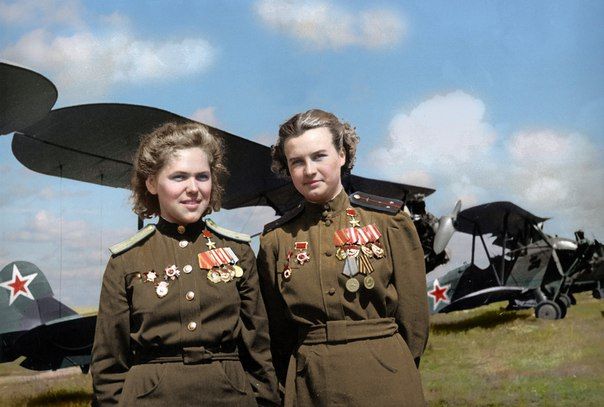
These women of the 588th were mostly between the ages of 18 and 26 and were sent to complete training at Engels School of Aviation, north of Stalingrad. The training was highly compressed, and the women had to learn in a few months what most soldiers would have learnt in a few years. Equally, the women had to be able to perform as pilots and navigators, maintenance, and ground crews. Not only did the women face challenging training, and poor equipment, they also faced ongoing scepticism from male colleagues who felt the women added no advantage in combat. The regiment was led by its commander, Major Yevdokiya Bershanskaya.
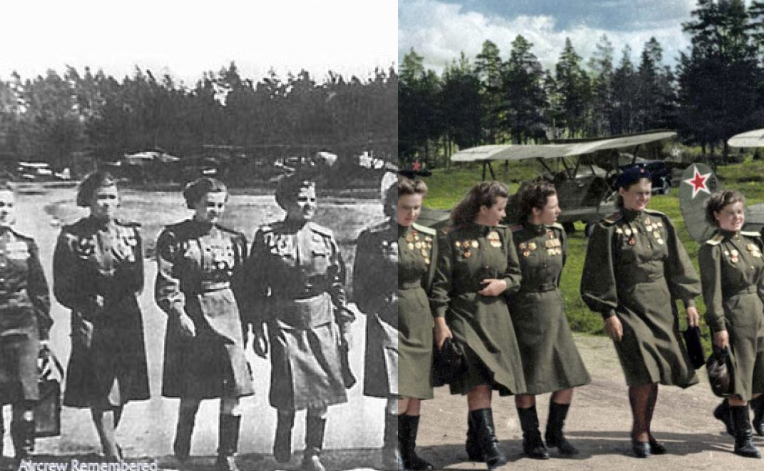
Despite hand-me-down equipment, outdated aircraft and persistent scepticism, the 588th was a successful bombing regiment. They carried out both harassment and precision bombing and utilised some daring tactics. Planes would fly in packs with the first plane drawing the attention of German searchlights and sending up a flare to allow other pilots a glimpse of the ground below. The other planes would then cut their engines and glide to the bomb release point. Since German radar could not detect the planes, the only warning Nazis got was the sound of the wind rushing over the plane wings. This noise, which supposedly sounded like a broom sweeping the floor, earned the 588th the nickname Nachthexen, or 'Night Witches'. Since they were undetectable by radio locators, radar and infrared locators, the Night Witches were almost ghostly. The planes could only carry 2 bombs each, so it was common for 40 2-woman crews to be sent out in a night. These crews would each fly between 8 and 18 missions in one night, returning between runs to re-arm themselves. Since the planes were not fitted with guns, their only method of avoiding Nazi fire was to dodge and manoeuvre around bullets.

The Night Witches had 12 commandments, the first of which was 'Be proud you are a woman'. Although their job was to kill Nazis, during their downtime they participated in needle craft, patchwork, and dancing. They even utilised their pencils as eyeliner. These were women and soldiers, neither obscured the other.
Many women in history have gone unrecognised for their achievements. The Russian Night Witches are an exception. In total 261 women served in the 588th Night Bomber regiment, of whom 32 died from plane crashes, combat deaths and tuberculosis. 23 women were awarded the prestigious title 'Hero of the Soviet Union' with 2 others being titled 'Hero of the Russian Federation' and one receiving the title 'Hero of Kazakhstan'. As for the founder of the 588th 'Night Witches' and the other female aviation crews, Major Marina Raskova died January 4, 1943. She had finally been sent to the front line, but her plane never made it. Her funeral was the first state funeral of World War II and Raskova's ashes were buried in the Kremlin. These women were undoubtedly crucial to the war effort, and vital in defeating the Nazi advance. The final mission took place on May 4th, 1945, where they flew to within 60km (37 miles) of Berlin.
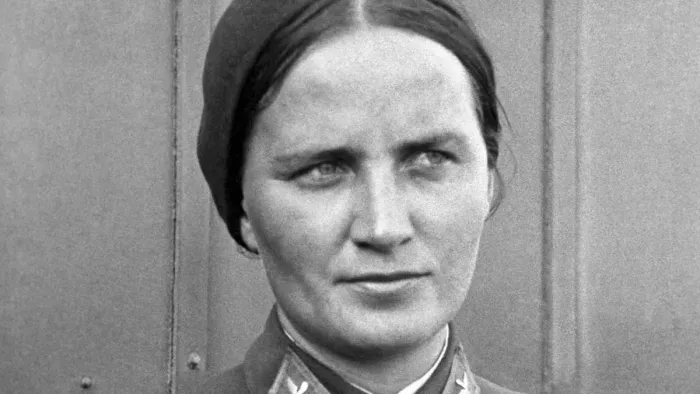
Despite their success, the women of the 588th were not invited to join the victory-day parade as it was decided that their planes were too slow. In addition to the 588th Night Bomber regiment, the other two female units were the 586th Fighter Aviation regiment and the 587th Bomber Aviation regiment. Of the three groups, all began as all-female regiments, but none remained that way. The 586th's commander was replaced by a man in 1943 and, following her death in 1943, Marina Raskova was replaced by a man as commander of the 587th.
These highly decorated, female aviation units were disbanded 6 months after the war. Nevertheless, the achievement and bravery of these women is remarkable. In the air they flew substandard planes, faced enemy fire and frostbite. Whilst on the ground they were constantly subjected to speculation and sexual harassment. The 'Night Witches' of the 588th Night Bomber regiment, truly were the stuff of Nazi Nightmares.



